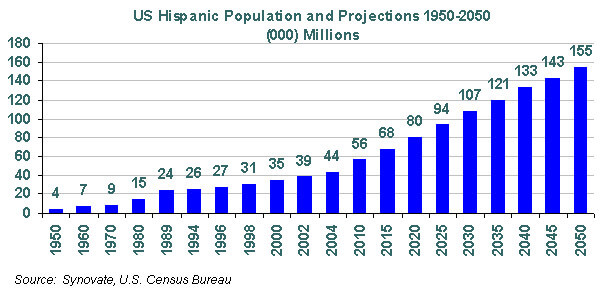Menu
5 reasons why Spanish is the language of the future
From China to the United Kingdom and the United States, the interest in learning Spanish continues to grow. A language that, little by little, is being introduced into all levels of education in non-Spanish speaking countries, from preschool to university. An indicator of worldwide interest in Spanish, which we can confirm in the experience of our Spanish schools.
In the following paragraphs, we review the five reasons underlying the good health of Spanish and the main reasons why the Spanish language is slowly gaining ground to English and Chinese, standing out as the language of the future that everyone should learn.
1. It is the second most spoken language in the world
The figures on the number of Spanish speakers are clear: 577 million people are able to understand and express themselves in Spanish. This includes both those who have Spanish as their mother tongue (over 420 million) and those who speak Spanish as a second or foreign language.
2. Spanish-speaking territories continue to grow
According to data provided in the latest report on the state of Spanish in the world published every year by the Instituto Cervantes (most important institution devoted to Spanish language and culture), 7.6% of the world’s population in 2018 was Spanish-speaking and it is expected that by 2050 the figure will be 7.7% (756 million people).
For demographic reasons, between 1950 and 2050 the Instituto Cervantes predicts that the percentage of the world’s population that speaks Spanish as a native language will continue to increase, while the proportion of Chinese and English speakers will decline.
3. USA: 2nd Spanish-speaking country in 2060
An important fact to point out is that Spanish speakers will not only grow in countries where Spanish is the official language. It is estimated that by 2060 the United States will be, after Mexico, the second Spanish-speaking country on the planet.
Read also: Top Reasons to Learn Spanish in Latin America

4. It is the second language of international communication
The Atlas de la lengua española en el mundo (Atlas of the Spanish language in the world) highlights some characteristics that make Spanish an international language: it is a homogeneous language, which is spoken in a fairly compact geographical area and most Spanish-speaking communities also inhabit neighboring territories.
These factors make the Hispanic territory a favorable place for there to be a very high communication index, which is being transferred to other non-physical spaces such as the Internet, where it is consolidating as a language with which to communicate on the Web, apps and social networks.
5. It is gaining ground in international trade and business
Just as Spanish is spreading over the Internet, it is also gaining ground as a business language due to its importance in international trade. Many companies have found in Latin America a powerful market in which to market their products and they need employees who speak Spanish.
This is a trend that is also spreading to the United States, where Spanish-speaking consumers are also on the rise. In California, for example, about 26% of consumers are Hispanic and in other states such as Texas, Florida, New York, and Illinois they also have important percentages of Spanish-speaking consumers.Get to know Peru, Ecuador, and Bolivia while learning the language of the future with the Spanish courses of LatinoSchools.
Archives
- April 2020
- March 2020
- February 2020
- January 2020
- December 2019
- November 2019
- October 2019
- September 2019
- August 2019
- July 2019
- June 2019
- May 2019
- April 2019
- March 2019
- February 2019
- January 2019
- December 2018
- November 2018
- October 2018
- September 2018
- August 2018
- May 2018
- March 2018
- November 2017
- October 2017
- September 2017
- August 2017
- July 2017
- June 2017
- May 2017
- April 2017
- March 2017
- June 2004




